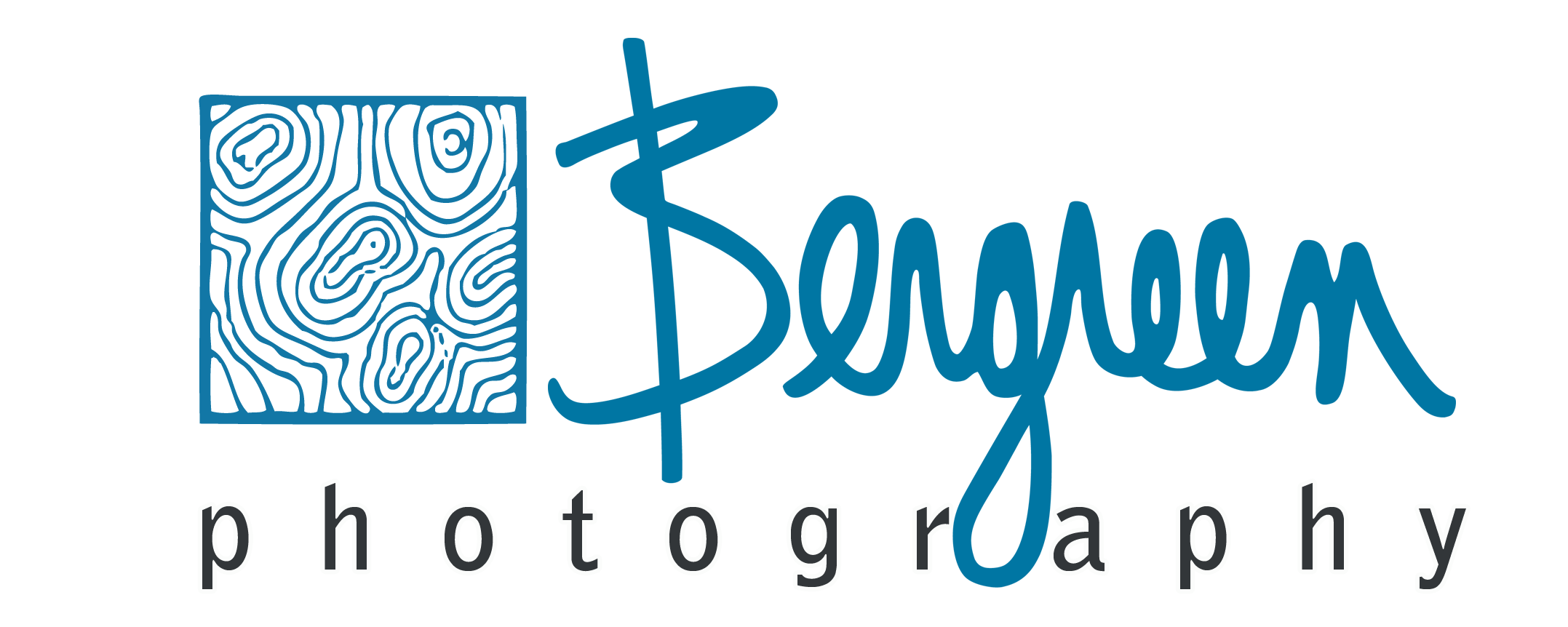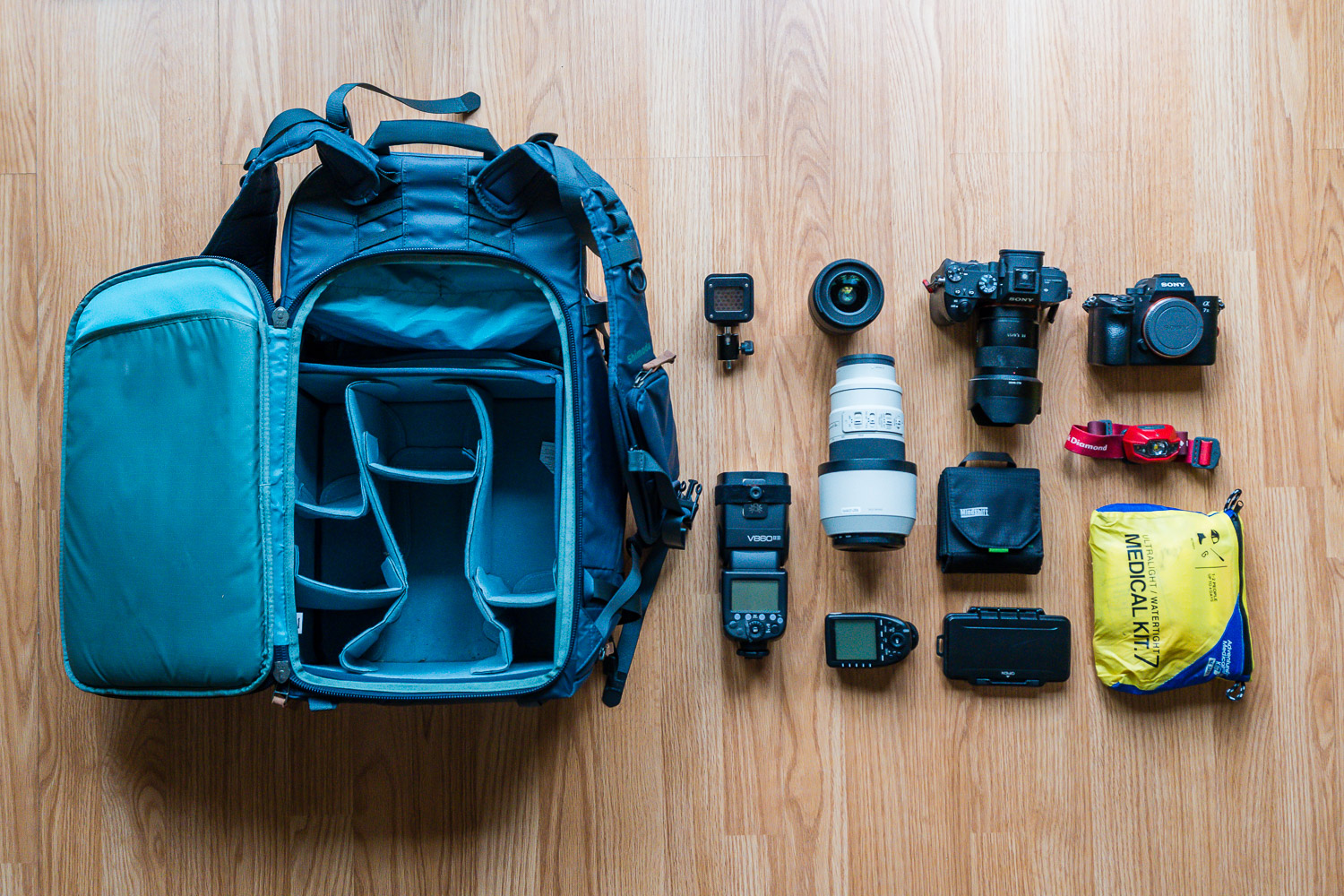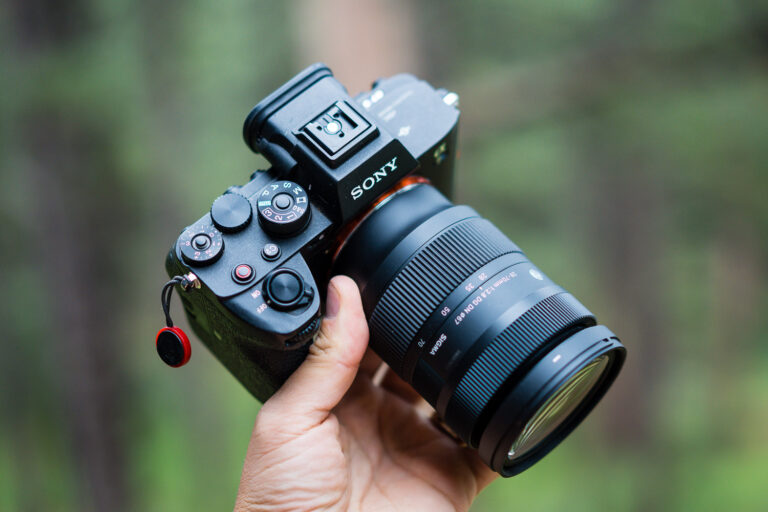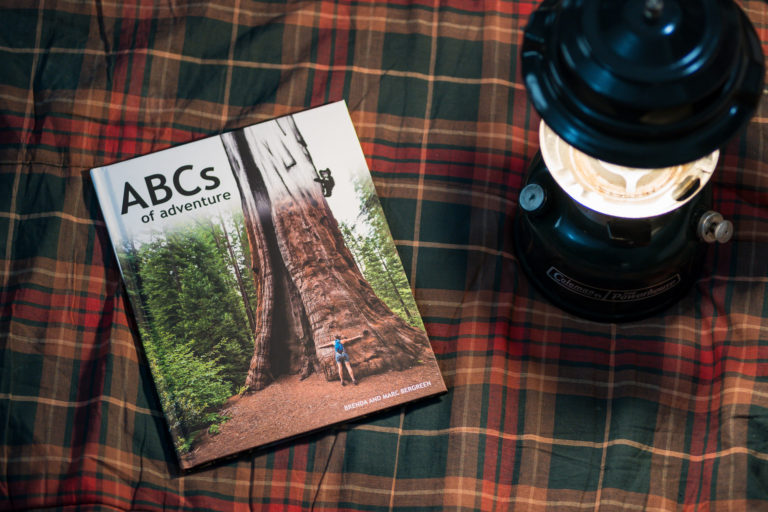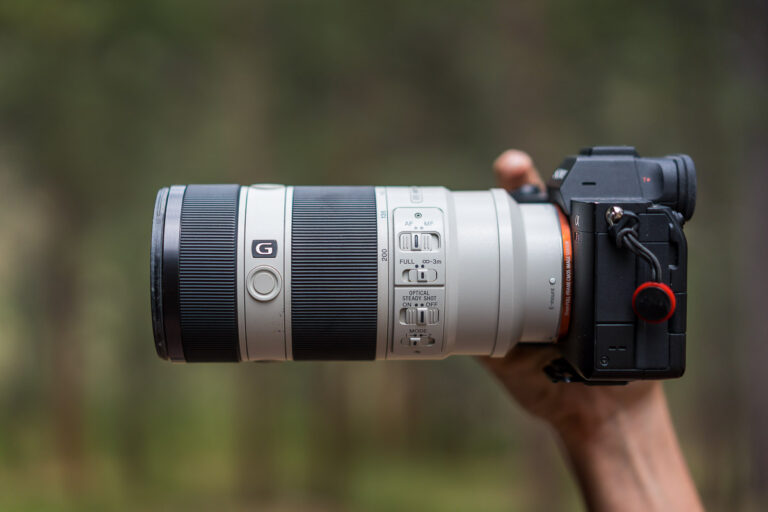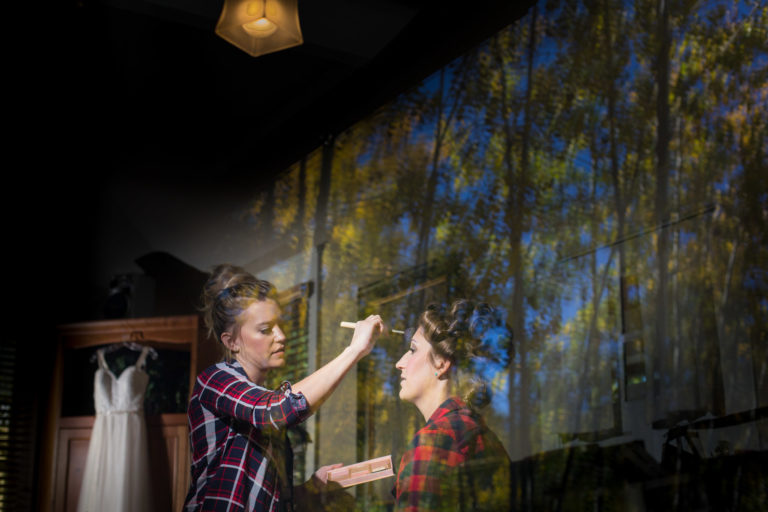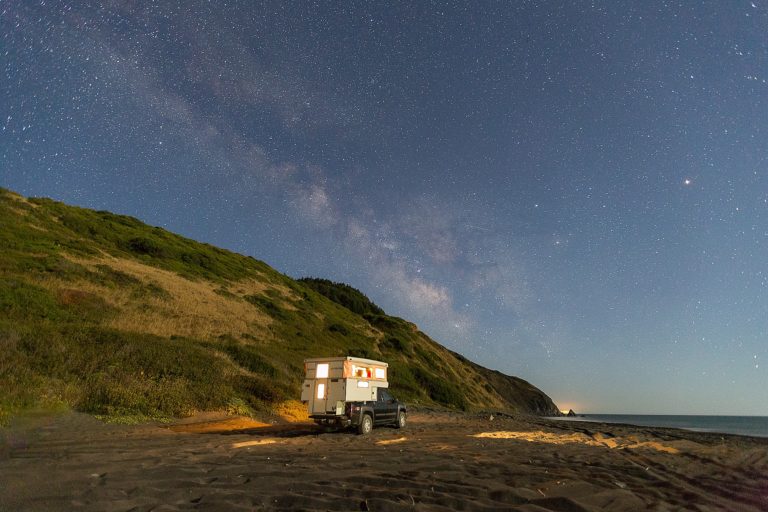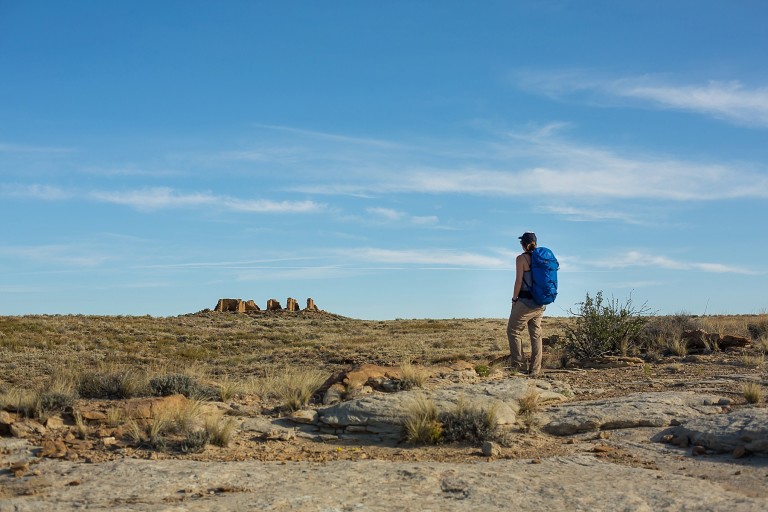10 Essential Gear Suggestions for the Adventure Photographer
As an adventure photographer, you have to have gear that’s capable of capturing those stunning landscapes. But, your gear can’t slow you down on your adventures. This post will walk you through gear suggestions both specific items and general tips to keep in mind.
We’ve been photographing people in nature professionally for over a decade. Our love of the outdoors and human-powered sports has led us to pursue adventure photography. We get to make a career out of our desire to explore.
But the passion for the outdoors requires a skill set broader than just photography. We have to be able to shoot under crazy weather conditions, variable light, and sometimes while hanging from a rope or off the side of a snowmobile. Your equipment should both complement and enhance your skills so that you can create epic photos of all your adventures.
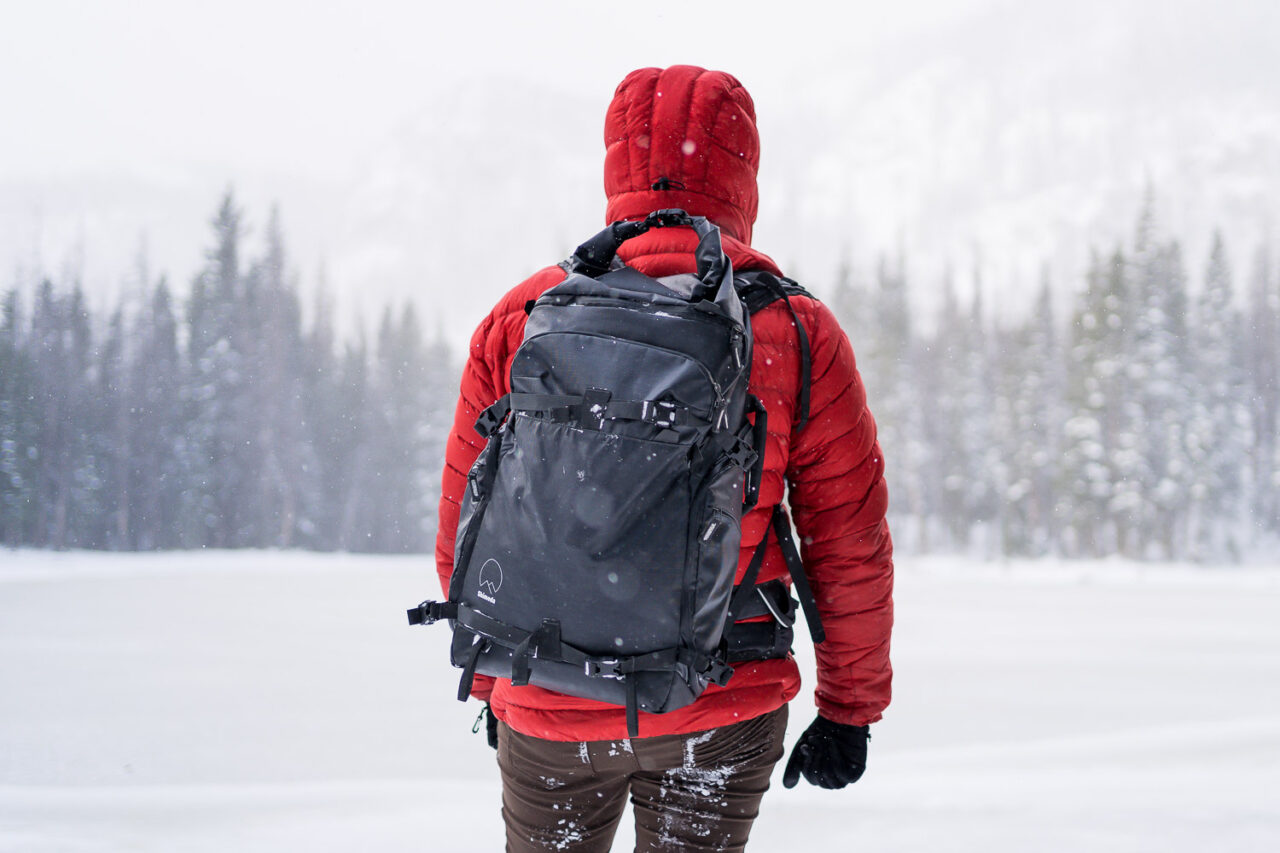
Adventure Photography Gear I Never Leave the House Without
1. A solid adventure photography backpack
If you’re going to be on the go, as most adventure photographers are, you’re going to need to have an adventure backpack that will fit all your gear while also protecting it. I’ve tried a ton of different packs and found there to be a lot of variety. But some things are consistent must-haves.
Best Adventure Photography Bag
Look for enough space for all of your camera gear plus jackets, snacks, water bottles etc. You need the pack to be comfortable when fully loaded. It also helps if it’s durable and waterproof so that you can set it down anywhere you get what you need.
If you’re on the hunt for a good bag, check out this review I did of all the best bags I’ve found in my search. It will help if you have a solid idea of what your adventure photography kit looks like so keep reading to see what you’ll need to pack in the bag.
One important thing to consider is how adventurous you are. Some people fall into the category of travel photography more than adventure photography. The bags we choose are meant to mimic the features of a true adventure backpack while adding some camera-specific features. If you’re into travel photography, you may be looking for features that help you navigate the airport smoothly or feel at home in a more urban environment. It’s really up to you to visualize the scenes you’re moving through to see what bag features make sense.
You can view my top picks below:
These are, in my opinion, the best bags on the market for adventure photographers or travel photographers who carry their gear to remote locations.
2. Lightweight high-quality camera body
Adventure photography requires that your camera can focus quickly under crazy conditions but also capture beautiful long exposures. You might even want to be able to capture some video as more and more adventure photographers are doing videography as well. You’ll need to look for a camera that can accomplish everything you want but that doesn’t slow you down.
Over the years we’ve used a variety of camera systems but at this time, I think Sony is the leading brand. Their feature-packed, budget-friendly, and very compact/lightweight cameras make an excellent choice for anyone trying to keep up with athletes in the mountains. Many photographers will choose different brands but what it comes down to is the camera that you feel most comfortable with. If it’s super lightweight but takes forever to adjust the settings, it will slow you down.
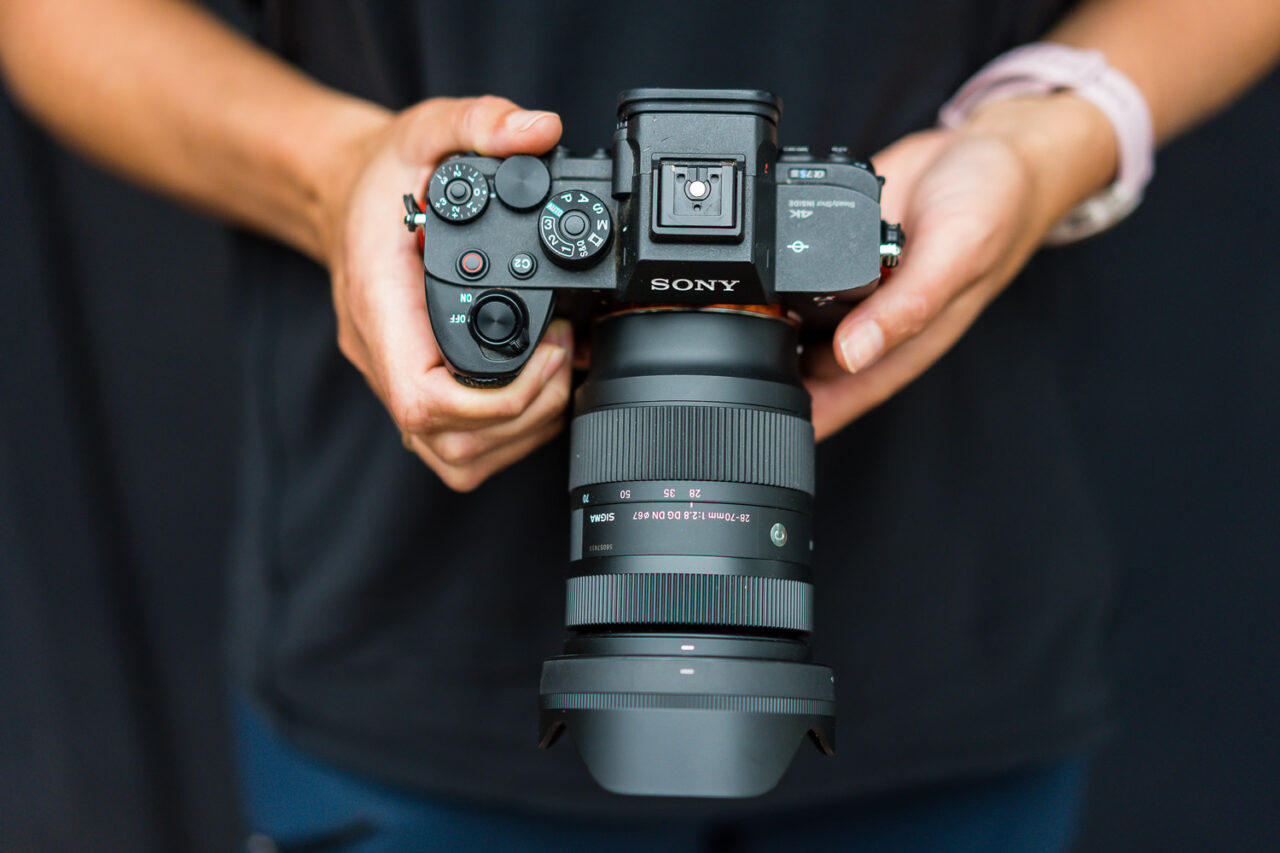
There are so many features to consider but I’ve found that the Sony A7IV has a great combination of features that make it a solid choice for many people. You could look at the Sony A6600 if you’re on a tighter budget or if you want the highest resolution, the Sony A7RV. The Sony system can be a little confusing if you’re not familiar with the lingo but leave a comment below if you’re unsure what camera to look at and I’d be happy to help out.
3. Versatile lenses to help you get the shot
Once you’ve selected your ideal camera body, it’s time to choose your glass. Since adventure sports are fast-paced you might not be able to carry or juggle a ton of lenses. Focus on quality over quantity.
I almost always have a 16-35mm with me to capture landscapes but I also love the 70-200mm for the magic of compression. I like to be able to produce a variety of focal lengths which means choosing lenses that help me tell the story I’m looking to tell.
Prime lenses are great for their ability to focus the viewer’s attention with a sharp subject and beautiful bokeh in the background but they are often a little too restrictive for the fast-paced environment of outdoor sports. In specific settings, I might bring a prime lens but most adventure photographers swear by the trifecta of zoom lenses, aka the holy trinity:
Wide Angle Zoom – Sony 16-35mm f/2.8 GM
Mid Range Zoom – Sony 24-70mm f/2.8 GM II
Telephoto Zoom – Sony 70-200mm f/4 G
The standard holy trinity of zoom lenses is a set of 3 lenses, all f/2.8 aperture covering a focal range from 16mm – 200mm. You may notice that I chose the f/4 version for the 70-200mm. I love this lens because it is lighter and more compact than its f/2.8 counterpart. Additionally, it’s cheaper and I don’t often need the extra stop of light. You can learn more in my review here:
If you’re still unsure about which will work better for you, I did a comparison here:
You might also enjoy this review of my favorite lens, the Sony 16-35mm f/2.8:
Although these lenses are top-of-the-line and my most used tools, it’s important to realize that it’s not realistic to buy the latest holy trinity of lenses when you’re just starting out. Maybe you start with a broader range zoom lens or even a few inexpensive prime lenses. When I was first starting out, I used whatever was available and affordable. Shop used, borrow gear, rent gear. Whatever it takes to get out and make some photos.
I will say that having nice lenses is often more important than having a nice camera body. Camera bodies only last a few years before they are replaced with a new version while lenses last much longer and retain their value. Now that you’ve got a thorough sense of my feelings about lenses, let’s move on to some of the other important tools.
4. Gear that helps you run your business such as client management software, accounting software, software to help you sell photos etc.
Being a professional adventure photographer means that you’re not just taking photos of adventure but that you’re running a business too. While I do think the best way to build your career is to start practicing and start taking photos, eventually you’ll have to build your business alongside your portfolio.
Luckily, there are a lot of great business tools that will help you get your adventure photography business off the ground. You will want to consider how you’re going to handle your client management, billing/money, contracts, marketing, and accounting. People envision that it’s all about taking photos in pretty places but the reality is a lot of time at a computer doing a wide variety of tasks.
First up, I would recommend you find some kind of client management software that can help automate and manage the day-to-day of booking clients, billing, and contracts. We have used Tave for years and swear by it as a time-saving tool. The initial setup can be overwhelming but it will save you so much time and keep things so much more organized. The main functions we love are digital contracts, billing, and keeping our job workflows in one place.
Additionally, I recommend you get set up with a tool like QuickBooks so you are ready for tax season and you can handle payroll if you decide to set up an LLC. We tried spreadsheets which were free but having dedicated software is essential once you start paying yourself through a payroll system which can save money once you have over $100k in profit (including the amount you pay yourself). For example, if you paid yourself $50k and had another $50k in profit, its definitely time to set up an LLC filing as an S-Corp that can do payroll. Depending on the situation, it can save 10-15% on taxes.
There are so many tools and systems out there to set up your business but I would encourage you to find the ones that are going to save you time. Don’t immediately jump on every tool available, keep your overhead low and your business lean until you need a tool to save time.
I will say that having a tool to provide exceptional guest service is a value add and will make the experience of working with you appealing. This can be as simple as a clean and easy-to-navigate portfolio site or a smooth online booking link for a client. We just switched to a new image delivery gallery service because it provides tools that will make our client experience much more friendly.
Another thing to keep in mind is to stay on top of your tools. Keep things updated and keep an eye on the market for newer/cheaper tools so that you stay ahead of other photographers in the market.
5. Apps: Photographers Ephemeris, GPS, and maps
Apps can solve all your problems right? Well probably not but they can make things easier and faster. A good app will save time and give you more information to make better decisions. I listed some of my favorites below.
- The Photographers Ephemeris 3d – Great for visualizing light on Mountains/Valleys etc
- PhotoPills – Great for planning shoots, especially astrophotography
- Gaia GPS – powerful mapping tool with a ton of data (can be used offline)
- Google Voice – get a business line and set up hours (also keeps your personal cell private)
- Peakfinder – fun app for seeing what peaks are on the skyline
- QuickBooks – great for keeping track of expenses on the go
I’m sure there are a ton more apps that you might be interested in but this list is my most commonly used tools specifically for my adventure photography business. I find that having a great idea for photos is a good starting point but getting to the right place at the right time requires planning and preparation. That process can be made so much easier if you have the right tools.
6. Adventure essentials like a headlamp, first aid kit, food, and water
Packing for adventure photography is like packing for any other adventure. You need to be prepared with all of the essentials. This means equipment like a headlamp, first aid kit, food, water, and other items you might need if you’re away from civilization for a long period of time. Having the experience to know what to pack for what type of trip is really about getting out there and experiencing things for yourself. The more you know the less you need, but having snacks and water will certainly make your life more comfortable.
Another element to consider here is getting some training. If you’re new to a sport, you might consider a guided course. Two courses I’ve found tremendous value in are an Avalanche Rescue Course and a Wilderness First Responder course. Both of these gave me the knowledge and insight I’ve relied on to keep myself and others safe in the backcountry. Years ago I also took some courses around alpine climbing (glacier travel, crevasse rescue, and ice climbing skills). These have all been super helpful in safely accessing the outdoors. Don’t be afraid to hire a guide and refresh your skills from time to time, you never know when that knowledge or experience will pay off.
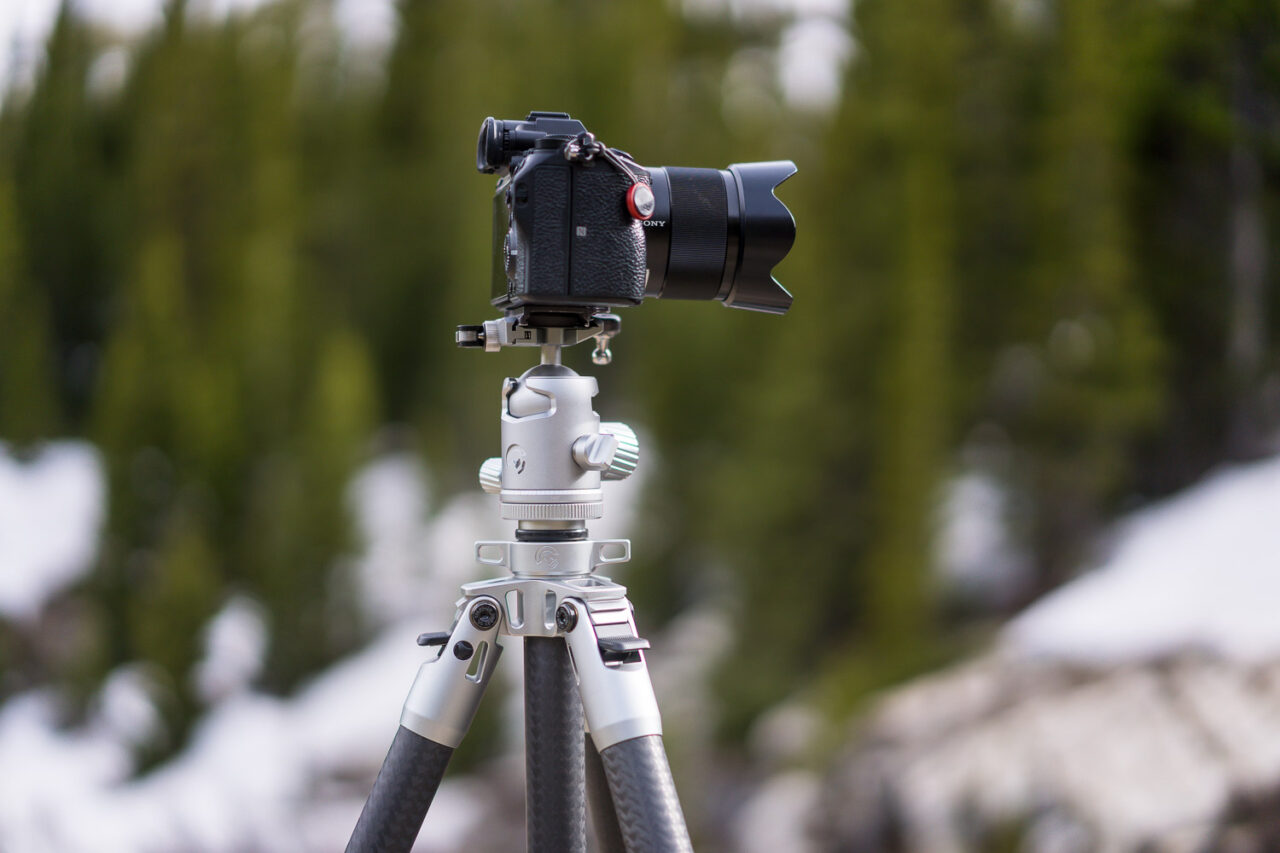
7. Lightweight tripod
This is a relatively easy one but something that took me years to embrace. For many years, I was too cheap to get a good tripod. I had funky plastic or heavy metal tripods that worked but I never knew what I was missing until I finally got my hands on a high-quality set of sticks.
Having a lightweight and easy-to-use tripod is super helpful. They certainly aren’t cheap but they last a long time. Especially if you plan on shooting video, having solid (yet lightweight) support for your camera will allow you to capture images that stand out. Here is my recommendation for a solid all around tripod. Additionally, I sometimes use this super lightweight/compact tripod option if I’m going to a remote destination.
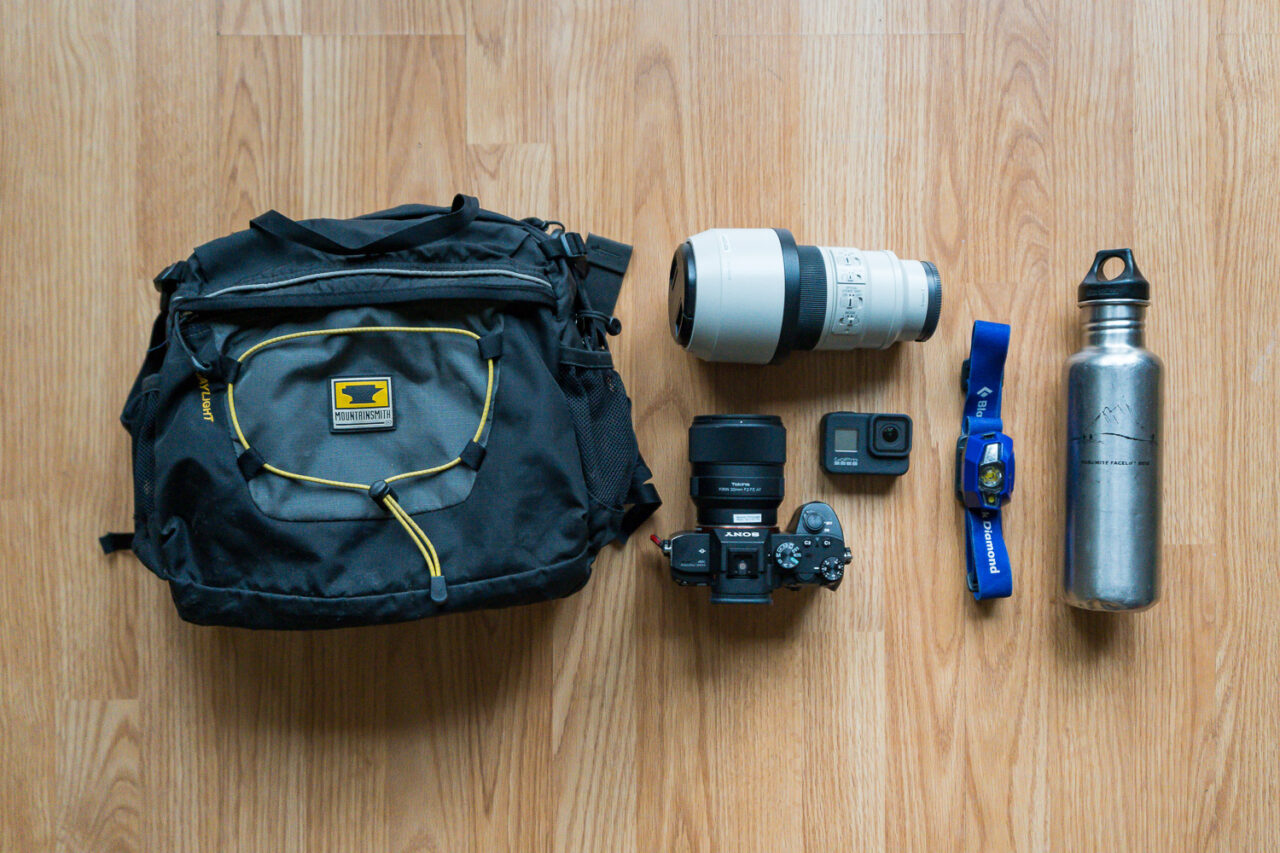
8. Spare batteries and backups of anything essential
Don’t forget your backups. Make sure you have enough memory cards and batteries, to exceed what you think you’ll need. It also can’t hurt to have a backup of anything essential for a particular shoot. You might leave some backups in the car or at base camp, whatever that looks like for your shoot, but it’s better to not leave it completely behind.
All it takes is one fatal drone crash to wish you packed a second drone. This comes from someone who crashed the drone without a backup. If something is essential to accomplishing your client’s goals, make sure you have two of them. Read more on drone photography and accessories.
I dropped my most important lens walking across the parking lot but everything worked out because I had a backup. Backups don’t have to be high quality, just a basic tool to get the job done. Get a cheap, used lens to cover yourself in the event of a failure.
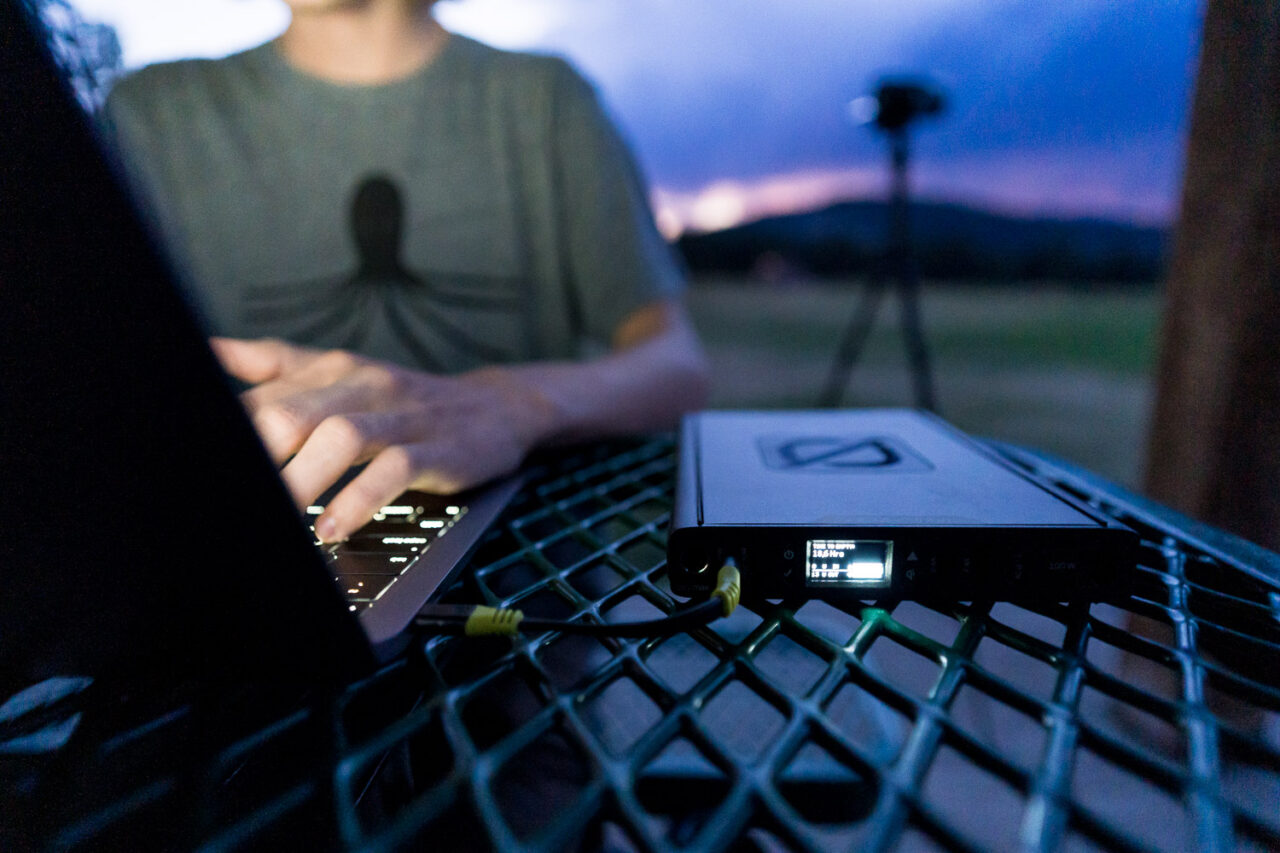
9. Charging Station and Power Source
Sometimes you’ll return to a base camp during a photoshoot and have access to electricity, but regardless you want to make sure you have all your chargers and a source of power. If you’re working out of a vehicle, make sure you’ve got access to enough outlets to keep everything running. If you’re going days through the backcountry, make sure you’ve got a solar charger or power bank to keep the tools you need to be powered up.
I’ve become familiar with the tools from Goal Zero because they are rugged and reliable but this has become a crowded market so find one that works for you. Nothing is worse than a dead battery during an epic sunset!
10. Data Backup and Communications Tools
When you’re out on an important shoot, being able to back up your files is essential. At a minimum, we always work with camera bodies that utilize two memory cards. This is an instant backup of our media but if you have a long shoot, you’ll likely need to swap cards at some point. This is when things get a bit more complicated. On a multi-day photo and video shoot, we might be capturing hundreds of gigabytes of media which can be a problem if you only have a few sets of memory cards. This is when having several backup drives and a computer is important. The most important rule is three copies with at least one copy in a separate location. Plan out a system but make sure it’s rugged so that you never lose any data!
Communication tools are also critical for adventure photography. Whether it’s just a simple set of radios to talk in areas without cell service or a GPS Locator for an SOS call, having tools that will keep you safe is essential. Photography is just a small part of your job, getting to the location and back safely is a huge portion of the work to create a photo.
Remember that Gear Doesn’t Replace Good Business Skills
You may have noticed that many of the tips weren’t about cameras but rather business tools. Sometimes photographers focus so much on camera gear that they forget they have other job responsibilities. Sure, you have to get the shot, but you also have to be able to run a business.
When you’re setting your budget, don’t forget to make sure you can run a great business in addition to getting the shot. That includes utilizing tools that help you know the perfect time to show up for that early morning light or when the milky way will be in position.
It’s About the Right Equipment Not Just Expensive Gear
Adventure photography requires that you have the right equipment rather than just a lot of expensive gear. It would help if you had tools that you can use to produce epic photos of an adventure. You don’t need a whole bunch of equipment that is going to bog you down, you need the right equipment to help you get the job done.
It’s also important to have equipment that can hold up outdoors. You don’t want it to be too fragile that you can’t use it. Adventure photographers need gear that they don’t have to be gentle with. Photographs from far-off places in the world are made by taking your equipment into harsh environments. Don’t be afraid to view cameras as a tool instead of something to be idolized.
Additional Gear Resources and Photography Tips
If you’re looking to dive deeper into gear that will help you take great photos, the links below might help. You can also check out gear reviews on YouTube.
- Adventure photography blog
- Tips for photographers
- Mountain Landscape Guide
- Travel Photography Gear
- Wedding Settings Guide
- 35mm vs 55mm Lenses
- Minimalist Wedding Photography Gear
- What is the Rule of Thirds
- How to Price Wedding Photography
- ND Filter Guide
We also have wedding tips on a variety of topics including wedding first looks.
About the author
I am Marc Bergreen, one half of a husband and wife photography team specializing in Colorado wedding photography and videography and adventure photography. If you need advice on the best gear for your goals, reach out.
Download our free guide on how to build a creative business and a life you love. Don’t hesitate to contact us and let us know how we can help!
In the meantime, remember to…

